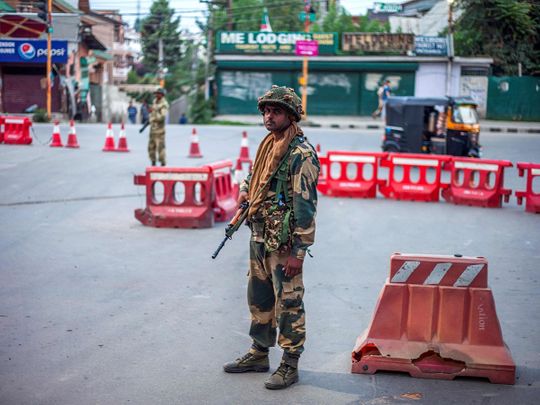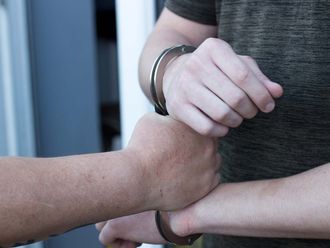
Armed soldiers stand in front of barbed wire in Indian Kashmir's near-silent summer capital of Srinagar during a massive security lockdown imposed on the restive region by the Modi government.
Kashmir was stripped of its seven-decade-long autonomous status through a controversial presidential decree on Monday, a day after a crippling curfew was imposed on its main city.
Home to more than one million people, Srinagar now looks like a ghost-town: armed soldiers on street corners and in front of barbed wire barricades make up most of the few people to be seen.
Information from the Himalayan region - one of the most militarised in the world - is scarce. All phone connections and internet were cut when the curfew was imposed.
Soldiers man checkpoints about every 100 metres on main roads in the city. Only people in essential jobs are allowed to leave their homes.
Virtually every shop is closed and residents said no fresh produce is arriving.
Most people stocked up with supplies of food in the days ahead of the curfew as rumours mounted that the New Delhi government was about to make its constitutional move, stripping Kashmir of its special privileges.
With the curfew biting, only soldiers and police equipped with riot shields loiter in front of apparently abandoned buses and colourful trucks that block streets of shuttered stores.
Pigeons and stray dogs in the city's scenic squares are untroubled by tourists, who journey to the region to enjoy the picturesque lake and local handicrafts, and touts attempting to hawk the latest wares.
Despite the lockdown in Srinagar, reports emerged Tuesday of sporadic protests. At least six people were admitted to a hospital in the city with gunshot wounds and other injuries, a source at the facility told AFP on condition of anonymity. A protester died after being chased by police, it was reported. A police official, speaking on condition of anonymity, told AFP that in one incident a youth being chased by police "jumped into the Jhelum river and died."
Authorities have insisted the region is peaceful however.
The region has been divided between India and Pakistan since their independence in 1947, and the two sides have conflicting claims on the territory, over which they have fought two wars.








